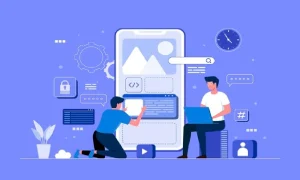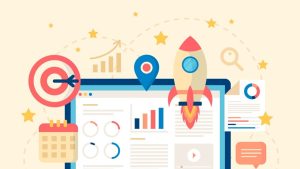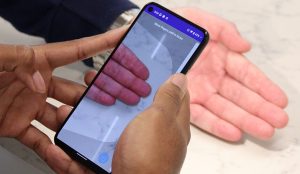The primary goal of digital accessibility is to make sure that everyone, regardless of age, gender, background, faith, sexuality, handicap, or other characteristics, has simple and free use of the Internet and its connected services. It is critical to acknowledge that not everyone is equally acquainted with digital goods and services. They are exclusively used by a tiny group of individuals. While a screen reader can help the blind see, someone with a learning handicap may prefer a different way to get the same information.
Everyone should have access to their digital information and services. What can you do to make this a reality? Reach out to QualityLogic if you want assistance in leveraging additional assets to ensure that your material is completely accessible. It is a software development business that offers QA testing to ensure that all companies are accessible to individuals from all walks of life.
If you employ them, they will examine your application for security flaws and advise you on resolving them to achieve digital accessibility certification. They provide a wide range of commercial solutions, including smart energy and eCommerce systems. Please use the information below to check your status before contacting them.
Make Your Content Easy to Read and Understand
Check to see whether what you’ve written is clear. Although the approach takes time, it must be used. Use simple language and avoid technical terms to do this. Making your work broadly available requires making it available in several media formats, like audio and video, for individuals who choose or are compelled to consume it in different ways.
Utilizing Videos and Images
Incorporating media like graphics and movies into your content may boost its visual appeal and usability. They can pose accessibility concerns if used incorrectly, so use them with care. For visually challenged persons, access to alternate text for any visual information, such as photos or videos, is vital. Ensure the contrast in your still photographs and video recordings is high enough for visually impaired people to see.
Efficiency Should Be Prioritized
The most effective method to ensure that digital products and services are easily available is to design them from the start with customers in mind. This requires thinking about accessibility from the beginning of the development stage (with user testing) to the end (with product coding). Working with accessibility experts may help you make your designs as accessible.
Conduct Accessibility Evaluations
Even if your products and services were designed with accessibility considerations from the start, conducting usability testing is always a smart idea. As a result, various forms of testing, such as automatic accessibility testing tools and human testing by persons with disabilities, are required.
Follow Existing Accessibility Laws and Regulations
Laws and regulations, including the Web Content Accessibility Guidelines (WCAG) 2.0, demand accessibility. A rising number of nations are generating such guidelines in order to control their procedures uniformly. If you want to offer legal products or services, you have to remain current on legal advancements.
The Benefits of Internet Access
According to the World Health Organization, disability is “a single overall concept that includes constraints, impairments, and social restrictions.” Physical, sensory-related, mental, intellectual, and psychological difficulties can all contribute to the development of a disability. Disability is one of the world’s most frequent health issues, affecting around one billion people. Persons with impairments, on the other hand, may have difficulty accessing resources such as jobs and education.
One approach to overcoming these challenges is to enable complete access to digital services and data. To accomplish this goal, applications, and websites must be created and built to be accessible to persons with disabilities, including the blind, deaf, or mentally challenged. By minimizing the number of barriers that individuals with disabilities confront, access to digital knowledge and resources can help them live more independent and satisfied lives.
People With Disabilities and Internet Access
When it comes to enjoying digital media, those with physical or mental limitations confront a variety of challenges. Software that converts written material into spoken language might be valuable for the visually impaired. Subtitles and transcripts can help deaf or hard-of-hearing people appreciate audio and visual content. It is vital to communicate the breadth to people who do not understand it.
Individuals with physical limitations may benefit from material that may be accessed by a number of input techniques, such as switches or eye-gaze sensors. Site creators and programmers that take the aforementioned factors into account will be able to reach a larger audience with their digital material.
Layout Designs for the Blind
It is vital to understand that not all electronic exchanges in the natural world are created equal. People with visual problems, such as blindness or poor eyesight, must rely on alternative sources of information. Several measures must be taken before distributing electronic media to minors. A written caption must accompany each visual element. Videos must also have closed captioning and audio explanations. You may use these methods to make all of your digital data accessible to anybody who needs it.
Considering Auditory Needs in Design
When creating digital content, it is critical to address the needs of a varied audience. People with impairments who have difficulty adhering to a standard curriculum are included. Closed captioning allows deaf and hard-of-hearing people to enjoy videos and movies.
When creating closed captions for digital multimedia, there are several aspects to consider. The readability and comprehension of the captions are crucial. Two examples include using large letter sizes and avoiding complicated pattern fonts. Captions and sound should also be in sync. The audio file can be manually or automatically transcribed using closed captioning software. Check the captions for errors and make any necessary corrections.
If you follow these guidelines, all users, regardless of skill level, will be able to engage with your digital material fully. Closed captioning, audio explanations, and sign language translation are all options for making your work more accessible. If the required conditions are met, it is feasible to create digital content that appeals to a wide spectrum of viewers.
Assisting People With Neurological Disorders
A variety of difficulties must be considered when generating digital material for persons with cognitive disability. Every person is unique, and they should be treated as such. As a consequence, it’s vital to keep that in mind. Broad generalizations can be used to broaden the attractiveness of the content. For example, services for people with disabilities usually push for the use of simple visuals and language. Because clarity increases understanding, try to eliminate as much doubt as possible.
It’s also crucial to allow plenty of room for comments and debate. Readers are more likely to acquire and remember information if they can relate it to their own experiences. This advice can help designers create digital material that is both important and easy to use for any audience.
To Get Started, Call QualityLogic
The support of QualityLogic in growing its services might benefit any website, no matter its existing state. They must arrive and install the machinery for your business. They will educate you on everything you need to understand about internet access and even aid you with content creation. There will be no surprise happenings. They are going to coach you until you are capable of competing with the rest of their squad. To learn more about how QualityLogic can assist you in making your digital material more accessible, go to www.qualitylogic.com.







